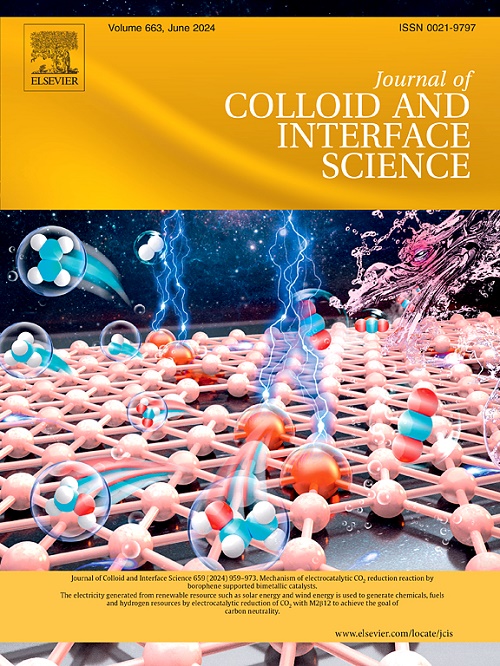In situ establishment of rapid lithium transport pathways at the electrolytes-electrodes interface enabling dendrite-free and long-lifespan solid-state lithium batteries
IF 9.4
1区 化学
Q1 CHEMISTRY, PHYSICAL
引用次数: 0
Abstract
Composite solid-state electrolytes (CSEs) exhibit the high ionic conductivity of ceramic electrolytes and the facile processing and good flexibility of polymer electrolytes, representing the most promising class of solid-state electrolytes for the industrialization of lithium batteries. Nevertheless, CSEs continue encountering substantial interfacial resistance, which impedes their practical deployment. In response to these issues, a Li6.4La3Zr1.4Ta0.6O12/poly(vinylidene fluoride) (LLZTO/PVDF) solid electrolyte membranes with a thickness of 25 μm were prepared by the doctor blade method. In situ polymerization of 1,3-dioxolane (DOL) at the electrolyte–electrode interface was initiated by lithium hexafluorophosphate (LiPF6) and lithium difluoro(oxalate)borate (LiDFOB) dual-salts to produce poly(1,3-dioxolane) (PDOL). The presence of PDOL in LLZTO/PVDF@PDOL results in a high room temperature ionic conductivity of 3.578 mS cm−1. Moreover, the Li||LLZTO/PVDF@PDOL||LiFePO4(LFP) battery exhibits a discharge-specific capacity of 143 mAh g−1 and capacity retention of 81.7 % after 1000 cycles at 2 C, and the pouch cell with LLZTO/PVDF@PDOL achieved a high energy density of 190 Wh kg−1. The findings of this study may facilitate the industrial application of CSEs.

在电解质-电极界面原位建立快速锂传输通道,实现无树枝状晶粒和长寿命固态锂电池
复合固态电解质(CSE)既有陶瓷电解质的高离子电导率,又有聚合物电解质的易加工性和良好的柔韧性,是锂电池产业化过程中最有前途的一类固态电解质。然而,CSE 仍会遇到很大的界面阻力,这阻碍了它们的实际应用。针对这些问题,我们采用刮刀法制备了厚度为 25 μm 的 Li6.4La3Zr1.4Ta0.6O12/ 聚偏氟乙烯(LLZTO/PVDF)固态电解质膜。六氟磷酸锂(LiPF6)和二氟(草酸)硼酸锂(LiDFOB)双盐引发了 1,3-二氧戊环(DOL)在电解质-电极界面的原位聚合,生成聚(1,3-二氧戊环)(PDOL)。LLZTO/PVDF@PDOL 中 PDOL 的存在使得室温离子电导率高达 3.578 mS cm-1。此外,Li||LLZTO/PVDF@PDOL||LiFePO4(LFP)电池在 2 C 条件下循环 1000 次后,放电特定容量为 143 mAh g-1,容量保持率为 81.7%。这项研究的结果可能会促进 CSE 的工业应用。
本文章由计算机程序翻译,如有差异,请以英文原文为准。
求助全文
约1分钟内获得全文
求助全文
来源期刊
CiteScore
16.10
自引率
7.10%
发文量
2568
审稿时长
2 months
期刊介绍:
The Journal of Colloid and Interface Science publishes original research findings on the fundamental principles of colloid and interface science, as well as innovative applications in various fields. The criteria for publication include impact, quality, novelty, and originality.
Emphasis:
The journal emphasizes fundamental scientific innovation within the following categories:
A.Colloidal Materials and Nanomaterials
B.Soft Colloidal and Self-Assembly Systems
C.Adsorption, Catalysis, and Electrochemistry
D.Interfacial Processes, Capillarity, and Wetting
E.Biomaterials and Nanomedicine
F.Energy Conversion and Storage, and Environmental Technologies

 求助内容:
求助内容: 应助结果提醒方式:
应助结果提醒方式:


